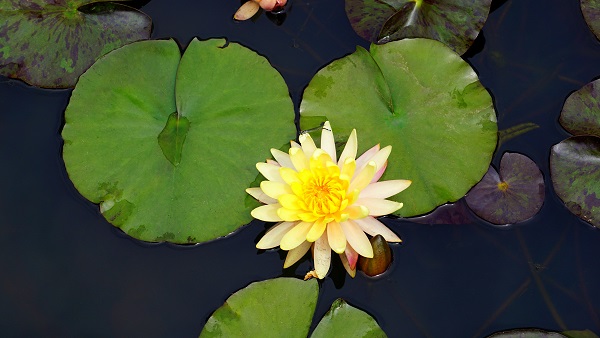August 23, 2022
Ducks Unlimited Canada is hosting a free open house at the Wetland Centre in Grande Prairie from 12pm to 5pm on October 5, 2022. Sounds like it will be an interesting time filled with refreshments, site tours, and other activities.
August 23, 2022
Ducks Unlimited Canada is hosting a free open house at the Wetland Centre in Grande Prairie from 12pm to 5pm on October 5, 2022. Sounds like it will be an interesting time filled with refreshments, site tours, and other activities.
August 10, 2022
We had a great time at the CLRA Peatland Restoration Workshop in Manitoba! It was refreshing to meet others working in the industry, share ideas regarding reclamation, and see some restoration techniques in person. Highly recommended for those interested in the subject.
August 4, 2022
Fun Fact: Kew Gardens lost track of a giant waterlily with three-metre-wide leaves for 177 years.
Until now, Victoria boliviana was mis-identified as one of the two known varieties V. amazonica and V. cruziana, but researchers at Kew Gardens noticed differences in the patterns of the spines that are used to clear space for their unfurling leaves. V. boliviana is now recognized as the largest species of giant waterlily. Its leaves expand by 25 cm a day and can hold the weight of an adult (more than 170 lbs). Turns out a mis-labelled specimen has been sitting at Kew since 1845!

In addition to their famously large leaves, giant waterlilies also have a very cool two-night reproductive cycle. On night one, the temperature of the white female flower rises 10 degrees C, triggering it to open and attracting pollinator beetles to its sweet, pineapple scent. At dawn, the flower cools and closes, trapping the beetles inside. They get to spend the day cool and shaded and sipping away at nectar while the flower changes from white to pink and male to female. On the second night, the newly male flower opens, brushing the beetles with pollen as they leave and head to another white female flower.
If you’re interested in reviewing the paper about the new species, follow this link: https://www.frontiersin.org/articles/10.3389/fpls.2022.883151/full
If you’re into unnecessarily dramatic plant videos, follow this link to see a V. amazonica leaf unfurl: https://www.youtube.com/watch?v=SM-Ilh2lHZk
August 2, 2022
We had an enjoyable and exciting team building session at Snow Valley Aerial Park back in June 2022. Thank you for the good memories and beautiful pictures!
July 28, 2022
Fun Fact: The seeds of the velvet bean plant cause such intense itching that they were weaponized by the British during WW2.
Hairs lining the seed pods of Mucuna pruriens, or velvet bean, contain serotonin and mucunain, which cases sever itching when touched. Scratching the affected area spreads the hairs and the itching, causing victims to scratch uncontrollably.
In an effort to demoralize the Third Reich during WW2, the British SOE (Special Operations Executive) smuggled itching powder made from M. pruriens to resistance groups working as laundresses and clothiers. The powder was applied to clothing, bedding, and toilet paper, but was particularly effective when applied to clothing touching “the more tender parts of the human anatomy”. The powder was so irritating that a U-Boat had to return to port for medical treatment because crew uniforms had been contaminated with it, causing an outbreak severe dermatitis.
July 26, 2022
Happy 10 year work anniversary to Jackie Ayotte (not pictured) and Marla Bohm!
Thank you for your hard work and dedication.
July 25, 2022
Paragon Infinity was proud to be a sponsor for the 22nd annual Infinity Golf Tournament fundraiser, supporting the McMurray Metis Bursary students. We had an amazing time learning more about Metis culture, meeting some bursary students, and hoping for a hole-in-one. Can’t wait for next year!

July 21, 2022
Fun Fact: You owe the dexterity of your hands to the fact that some figs don’t change colour when they ripen.
Maybe…at least a bit. Twenty percent of figs show no color change during ripening, which poses a sensory challenge if you’re a hominid trying to find nutritious food to eat. Imagine how much longer it would take to choose an avocado at the grocery store if you couldn’t squeeze it. You would have to bite each one to know if it was edible. Store managers wouldn’t like that.
Hominids, like chimpanzees, gorillas, and humans, have uniquely dextrous hands compared to the rest of the animal kingdom. In a study lead by Dartmouth College evolutionary biologist Nathaniel Dominy, researchers found that chimpanzees’ ability to feel the ripeness of a fig conferred an advantage over rival species when selecting fruit. Monkeys (black-and-white colobus monkeys, red colobus monkeys, and red-tailed monkeys) that compete for the same food relied on colour and bite-testing. Squeezing figs supplied nearly 75 % more information about fig ripeness than colour did and it was also four times faster than plucking it, biting it, and spitting it out if it wasn’t ripe. This lead to more efficient foraging and ultimately more calories consumed by the chimps.
While the researchers couldn’t definitively say that the ability to feel if a fruit is ripe was a selective force in the evolution of more sophisticated hands, the idea is very a-peeling.
If you’re interested in further reading, you can find their paper here: https://royalsocietypublishing.org/doi/10.1098/rsfs.2016.0001
July 20, 2022
A grand opening for the Paragon ballpark will be held this Friday July 22, 2022 3pm-6pm! More details in the link below:
June 29, 2022
Fun Fact: The proportion of leaves with drip tips in the fossil record can tell you how rainy the climate was.
Drip tips are specialised pointed tips on the ends of leaves of some plants. As their name implies, drip tips help channel water off the leaves quickly. In particularly rainy places, accumulated water can break leaves and provides a perfect place for the growth of algae, mildew, or other nasty microorganisms that thrive in the hot and humid conditions. They are common in rainforests and are more pronounced in shaded understory plants than overstory canopy plants that are exposed to sun and wind. If you measure the proportion of leaves that have drip tips, you can make a pretty reasonable guess of the local rainfall.
Apparently, my living room is very rainy…
If you want to see some drip tips in action (and an excited biologist), follow this link:
13804-164 Street
Edmonton, Alberta
T5V 0C8
Monday - Friday
8 am - 5 pm
© Copyright 2024 by Paragon Soil and Environmental Consulting Inc. All Rights Reserved.
Fleet Scheduling Request